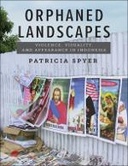Explore

Orphaned Landscapes: Violence, Visuality, and Appearance in Indonesia
Patricia Spyer
2021
0 Ungluers have
Faved this Work
Login to Fave
Less than a year after the end of authoritarian rule in 1998, huge images of Jesus Christ and Christian scenes proliferated on walls and billboards around a provincial town in eastern Indonesia in a conflict pitting Muslims against Christians. A manifestation of the extreme perception that emerged amidst the uncertainty and challenge to seeing brought on by urban warfare, the street paintings erected by Protestant motorbike-taxi drivers signaled a radical departure from the aniconic tradition of the old colonial church, a desire to be seen and recognized by political authorities from Jakarta to the UN and European Union, an aim to reinstate the Christian look of a city in the face of widespread islamicization, and an opening to a more intimate relationship to the divine through the bringing-into-vision of the Christian god. Stridently assertive, these affectively charged mediations of religion, masculinity, Christian privilege and subjectivity are only one among the myriad ephemera of war and its aftermath analyzed in the book from graffiti, incendiary pamphlets and Video CDs to Peace Provocateur text-messages and children’s reconciliation drawings. In Orphaned Landscapes, Patricia Spyer theorizes the production of the monumental street art and other visual media as part of a wider work on appearance in which ordinary people refigure and transform the aesthetic forms and sensory environment of their urban surrounds. The book offers a nuanced account of a place in crisis and motion and an analysis of how the work on appearance, far from epiphenomenal, is inherent to significant sociopolitical change in Indonesia as elsewhere.
This book is included in DOAB.
Why read this book? Have your say.
You must be logged in to comment.
